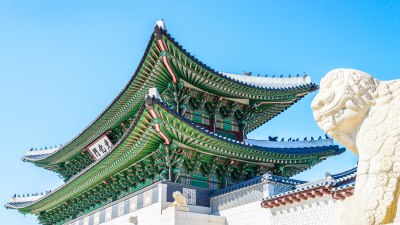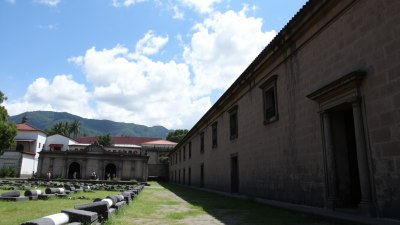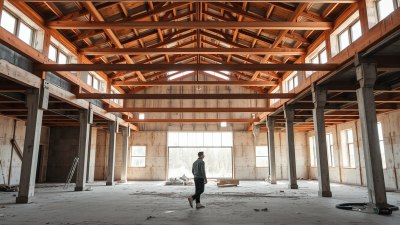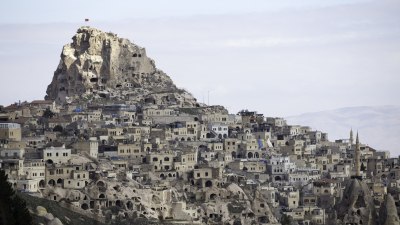Every Ruin Is a Lie Told Beautifully
Explore the profound beauty hidden within ruins and their stories.
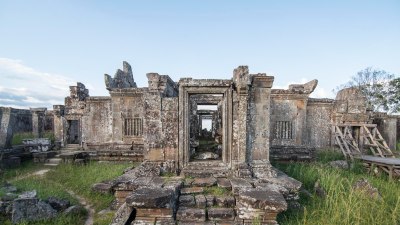
Ruins have a unique way of captivating our imaginations; they carry with them tales of history, mystery, and artistry. Each structure tells a story, and the silence enveloping these remnants speaks volumes. In this journey, we delve into the fascinating intersection of decay and beauty, exploring how every ruin is effectively a lie told beautifully, revealing deeper truths about life and the passage of time.
The Aesthetic Appeal of Ruins
There is an undeniable allure to ruins. The crumbling stone, the overgrown vines, and the remnants of what was once a bustling space evoke a sense of nostalgia. Artists, poets, and dreamers throughout history have found inspiration in these decayed structures. The beauty of the ruin lies not in its current state but in the memory of its past glory. Every chipped brick and rusted beam holds a story waiting to be uncovered.
The Natural Process of Decay
Decay is an inevitable part of life, and it mirrors our human experiences. Just as we age and our bodies change, so too do buildings age. However, the process of decay can be visually stunning. Nature begins to reclaim its territory as plants and trees entwine with stone. This juxtaposition of man-made vs. natural evokes complex emotions; it is a reminder of our impermanence and the ephemeral beauty of existence. The vibrant greens of nature contrasted with the grays and browns of ruins create a stunning palette, reminding us that beauty can flourish even in desolation.
Every ruin is a silent witness to history. They stand as monuments to past civilizations, embodying stories of triumph and tragedy. From the grandiose arenas of ancient Rome to the serene temples of Angkor Wat, each ruin tells a story of its time. Their degradation reflects the passage of time, hinting at the lives once lived within their walls. Visitors cannot help but feel a sense of reverence when standing among these echoes of the past. They are not only remnants of architecture but symbols of cultural identity and human resilience.
Ruins illustrate the fallacy of permanence. In our fast-paced world, we often seek stability and eternal success, yet ruins remind us that nothing lasts forever. The structures that once felt indestructible succumb to elements and time. This decay provokes thoughts about the legacies we leave behind. Were our lives penned in stone, or are they written in sand? Ruins teach us to appreciate the fleeting nature of our accomplishments and relationships.
There is a beauty rooted in imperfection. As the poet John Keats famously suggested, “A thing of beauty is a joy forever.” This concept resonates deeply with ruins. The cracks, blemishes, and discoloration tell a story of survival, defiance against time and nature. Each imperfection adds character and uniqueness, reminding us that true beauty is not devoid of flaws. It is in these irregularities that we find authenticity, transforming decay into art.
Artists often draw inspiration from ruins, creating works that encapsulate the beauty found in decay. They see the potential for reinvention, taking the narrative of a ruin and weaving it into their own. Painters, photographers, poets, and designers alike have transformed the essence of ruins into new art forms, exploring themes of nostalgia, memory, and identity. The act of creation becomes a dialogue between past and present, offering a fresh perspective on what it means to be human.
Literature has long embraced the motif of ruins as a powerful metaphor. From the iconic lines of Mary Shelley’s “Frankenstein” to the haunting imagery within T.S. Eliot’s “The Waste Land,” ruins evoke a sense of melancholy and reflection. Authors utilize ruins to symbolize lost dreams and the passage of time, often encouraging readers to contemplate their place within this grand narrative. Similarly, in fantasy novels, the remnants of ancient civilizations provide a backdrop for new adventures, embodying the mysteries of a forgotten world. Through these literary explorations, ruins continue to invite deeper philosophical inquiry.
In recent years, there has been a surge in tourism to ruined sites, driven by a desire to connect with history. Sites such as Pompeii, the Mayan ruins, and the remains of ancient castles draw millions annually. Yet this influx has also raised questions about preservation. How can we honor these sites while ensuring their protection against the ravages of time and tourism? Balancing accessibility and conservation is a delicate undertaking, underscoring the significance of ruins in our cultural heritage.
Ruins serve as symbols of cultural identity. For many communities, they embody collective memories and histories that shape current societal structures. The preservation of ruins often signifies the preservation of heritage, identity, and resilience against erasure. They remind us of the struggles and achievements of those who came before us, connecting generations through shared narratives. In this way, each ruin invites reflection upon the ongoing story of humanity, encouraging future generations to carry forward these legacies.
As we navigate an era of rapid technological advancement, the question of what will become of our modern structures arises. Will future generations view skyscrapers as ruins? How will they interpret the remnants of our current society? Technology and material innovation may create unprecedented changes, but the concept of a ruin will endure. It will continue to embody the aesthetic of decay and the narratives woven into the fabric of our culture, reminding us that every structure—regardless of its grandeur—will eventually succumb to time. As we construct our present, we should remain acutely aware of the transient nature of existence.
In conclusion, ruins are more than mere vestiges of the past; they encapsulate complex emotions, stories, and lessons about the human experience. Each crumbling wall or fractured archway stands testament to a time long gone, urging us to pause and reflect on our own lives. Ruins encourage us to embrace the beauty in imperfection and remind us of the ephemerality of our accomplishments. Within their decay lies a profound truth: that beauty can emerge from destruction; every ruin is, indeed, a lie told beautifully—inviting us to explore the depths of its narrative and find solace in its artistry. As we walk among these remnants, we are not merely observing history; we are engaging with it, shaping our understanding of existence.



